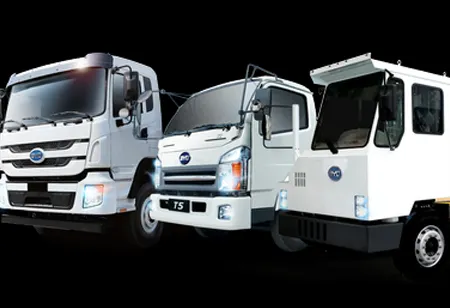THANK YOU FOR SUBSCRIBING
THANK YOU FOR SUBSCRIBING
Be first to read the latest tech news, Industry Leader's Insights, and CIO interviews of medium and large enterprises exclusively from Auto Tech Outlook

By
Auto Tech Outlook | Friday, April 08, 2022
Stay ahead of the industry with exclusive feature stories on the top companies, expert insights and the latest news delivered straight to your inbox. Subscribe today.
The future of commercial transportation is autonomous, connected, and electric (ACE) automobiles. The upheaval to the logistics industry will be analogous to the change occurring in other sectors due to cloud computing and the Internet of Things.
FREMONT, CA: In 2022, MarketsandMarkets expected the global market for connected trucks to grow from 18.60 billion USD in 2017. According to US-based industry research and consulting firm Frost & Sullivan, by 2025, 43 percent of commercial trucks in Europe and 55 percent in North America will be connected. This trend will continue to evolve, affecting supply chain operations.
Consider the CARNET (CAN). The CAN communication protocol specifies how data is exchanged between car components and sensors. In the same way as ECUs, the CAN was not designed to be internet-connected.
This early 1980s onboard network is based on "trust." This idea allows malevolent attackers to control cars in a networked environment remotely. Speech recognition allows an attacker to exploit arbitrary car functions.
SAE J1939 defines the CAN protocol for commercial vehicles. In addition to ensuring system interoperability, this standard has been available for many years and continues to gain favour in telematics. Due to its openness, SAE J1939 is a risky standard. If you had access to the vehicle's network, you could quickly attack a CAN bus using this protocol. As soon as they obtained control of crucial systems, the researchers could accelerate and damage brakes while moving a car.
ACE provides better safety, fuel efficiency, fleet management, and cost savings. But there are challenges, especially the need for enhanced cybersecurity.
As automobile technologies evolve from isolated onboard systems to complex networked and interconnected systems, one of the critical security issues arises. But they also increasingly rely on complicated software.
Modern electronic control units (ECUs) are no longer solely mechanical devices. Software-based, intelligent, networked systems with a complex IT architecture.
New Technologies Pose Financial and Security Risks
Interconnected telematics systems and technologies like IoT (Internet of Things) are reshaping the sector.
Safety: The commercial vehicle sector has a long history of focusing on functional safety. The industry has successfully mitigated road safety threats based on years of data on vehicle dynamics controls. However, in a connected world, operational safety must also limit threats "off the road"—and this is where cybersecurity comes in.
Off-road concerns are more difficult to address than on-road risks. Cyber-attacks, unlike road hazards, are harder to predict.
Financial: Industry stakeholders ranging from OEMs to fleet operators may be financially impacted.
Check Out This : Manage CFO
Consider the fate of Fiat Chrysler. After the Jeep Cherokee security issues were discovered, the business recalled 1.4 million vehicles, including other models. A week after the hack was revealed, the company's stock value decreased by 20 percent.
Losses from cybercrime can be pretty costly for fleet operators. A damaged vehicle's direct repair costs can be highly significant. These costs can be high when cargo value is involved. The same is true for contracts lost due to a fleet's reputation being harmed. Because every transported commodity has a value, no cargo is safe against theft.
 Copyright © 2025 AutoTech Outlook. All Rights Reserved | Privacy Policy | Subscribe | Sitemap | About us | Feedback Policy | Editorial Policy
Copyright © 2025 AutoTech Outlook. All Rights Reserved | Privacy Policy | Subscribe | Sitemap | About us | Feedback Policy | Editorial Policy 



